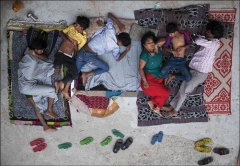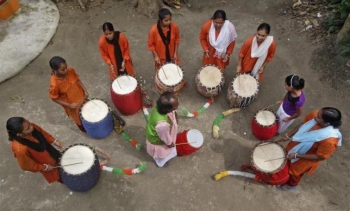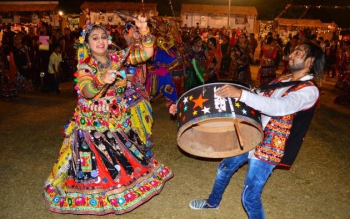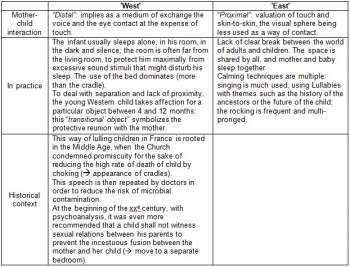10/26/2015
The little beggar girl
When we changed our office, I said to goodbye to the leper and his stumps of hands who owns the intersection of Juhu Tara Road. On my new itinerary, I stop at another crossroad “owned” by another gang, the gang of the fake eunuchs – but I will speak about it later...
The other day, I was going home and I saw this three-year-old girl, lying on the sidewalk. In fact I saw her because a woman, presumably a beggar, was leaning on her and watching the flies fly. And this is not a figure of speech. The small girl was covered with flies. And the woman did not make a gesture; she stood there a few seconds and left. Moreover, all the time that I was at the red light, some passers-by are passed, none of them making a gesture. None of them even glancing at her actually. As if she wasn't there.
I was trying to deal with the feelings that the scene inspired me – sadness, anger, shame (of myself, for not being able to do anything other than holding a camera instead of moving my ass, and I have no excuse) – when my rickshaw driver started moving and I discovered the same woman, some ten metres away, monitoring the child and laughing with two other kids. She had made the little girl lie there, across the pavement, on purpose, more visible, rather than on the street corner...
This is what I like about India, you regularly get a slap as reality check (1)...
And finally, a more optimistic note with this nifty website, TheBetterIndia, which shares positive initiatives to help "make good collectively. And this makes the balm in the heart every time I read an article!
(1) According to UNICEF, 12.6 million children are engaged in hazardous occupations. Nearly 40,000 children are abducted every year, of which 11,000 remain untraced, according to a report by the National Human Rights Commission of India.Source: https://in.news.yahoo.com/which-devi-are-we-worshipping-when-a-4-year-old-girl-gets-raped-here-091250861.html
12:00 Posted in Funny things about India in videos | Permalink | Comments (0) | ![]() Facebook | |
Facebook | |
10/19/2015
Every occasion is good to make some noise!
A conversation between my Hindi teacher (yes I am trying again!) and I:
- Her: Make a sentence with “I am…”
- Me: main thoda thakee hoon (I am a little tired).
- Her: Oh no! What happened?
- Me: Navratri…
- Her: Oh you’re fasting?? (1)
- Me: No man I’m not fasting, they are playing drums all night!! (2)
(1) Navratri is the festival where the different avatars of Goddess Durga is worshipped for NINE nights (one night for each incarnation). A lot of people observe fast, as a way to pay gratitude to the Goddess. “Navratri fasting may have religious origins but there is scientific reason backing the same. The festival occurs twice a year, each time when the season is at the brink of change: from winter to summer and again when the air starts to get a bit chilly. Coincidentally, this is also the time when our immunity is low and it is advisable to eat light and nutritious food. The fasting rules, thus, suggest that one should abstain from meat, alcohol, grains, common salt and anything that is processed. Onion and garlic are avoided while fasting as these are known to generate a lot of heat in the body while grains are hard to digest. From an Ayurvedic perspective, these foods attract and absorb negative energies and should be avoided during a seasonal change.” (source)
Oh wait! Then I AM fasting! Because I have been quite sick (maybe due to the weather change?) for the past 4 days. And to give some rest to my digestive system and let my energy focus on healing (see how I talk! what India does to you!), I have been on a liquid diet (juices and soups).
(2) This festival is also known for its dances. And now for its noise. As they play drums every day, from 9 to 11 PM in the temple near my building. I think I will go have a look tonight instead of just banging my head on the wall!
08:00 Posted in Expatriation (in India and in other countries), Incredible India! | Permalink | Comments (0) | Tags: india, noise, festival, navratri, drums, danses, temple, hinduism, durga | ![]() Facebook | |
Facebook | |
10/12/2015
Sleep baby sleep... (Sleeping in India and in France)
A friend (Indian) came home unexpectedly on Saturday night at 9 PM. When he ‘complained’ about Baby Samurai not being available for play, I explained that he had been sleeping for an hour already. To which he answered: “Are you German or what, that he needs to have a schedule?” That says it all…
Sleep is one of the largest cultural differences between India and France, according to me.  For example, an Indian can easily talk to you while you are asleep, or clean your room, or even bring you a chai. And nobody would think of closing the door of the bedroom when starting a movie full volume in the room next door. The few times I allowed myself to sleep late, like until 11, my favorite Indian was all over the place, and came and disturbed me several times...
For example, an Indian can easily talk to you while you are asleep, or clean your room, or even bring you a chai. And nobody would think of closing the door of the bedroom when starting a movie full volume in the room next door. The few times I allowed myself to sleep late, like until 11, my favorite Indian was all over the place, and came and disturbed me several times...
It must be linked to the living conditions: as many people live in very small spaces, no one can afford the luxury of a beautiful uninterrupted nap, or in silence (to be fair, it is better they learn from an early age to sleep through the noise in India, it is quite a matter of survival). In India people sleep because they have to, they do not indulge in the comfort of resting. However it is a little less true regarding food, yet another physiological need.
The same goes with babies (1). They follow the rhythm of the household. Even worse: If parents work a lot, it is not uncommon that a baby stays awake till past midnight in order to spend some time playing with his father.
In India, the child sleeps with his mother. And therefore, theoretically, with his father. Unless the latter doesn’t want to be woken up (by the baby’s cries or kicks), in which case he will go sleep wherever he can (on the floor, on a mattress, in another bed or on the couch). I know a lot of such cases. About the couple intimacy? Well, even before there is a baby, it is already quite an unusual concept (once again probably because of the ‘sardines’ way of life and also of the arranged marriage). And even if it was, the baby comes first. And he must sleep with his mother, to be able to suckle ad libitum and to ‘create bonds of love’. In such a context, the baby doesn't need to learn to fall asleep by himself nor to go back to sleep on his own; and they don’t let him cry more than two seconds. The baby is King in India, at least the first two-three years (after that it becomes less funny, with a strong reality check for what is coming ahead).
That mothers end up exhausted from continuously waking up from kicks or a greedy suckling mouth, nobody cares (at least after the first 3 months where they are well looked after by their mothers, so that they recover well from the physical hardship that giving birth is).
You have guessed, I was one of these wron-out mothers, since Baby Samurai had decided that sleeping at night was good for fools, the day he turned 4 months. well he was sleeping, but would wake up every two hours (at best). In addition we traveled quite a lot, and he often slept in our bed. At 5 months I did try the Tracey Hogg method to teach him to fall asleep by himself, but I was already too weak from sleep deprivation to withstand an hour of crying and I decided that 1. He was too small, 2. Westerners were a little too harsh in the way they (we) educate the babies, 3. The French are quite cold-hearted to leave a newborn alone in his bed in his room the first night itself.
And there I became sleep deprived, crazed. Not depressed, but a real zombie. My goal every day was to pull the wool over my colleagues’ eyes (and master the technique of sleeping with eyes open). I must say that in addition to micro-nights, I had to deal with breastfeeding. And breastfeeding is good, but it is not always easy: it takes of lot energy, when he feeds, and even more so when you have to express milk. I had therefore abandoned the idea that baby Samurai (and I at the same time) would one day sleep an entire night, at least not before he would leave home...
And then, one evening, a friend of mine, a French girl married to an Indian man, sent me a document to “Sleep train babies" (SleepSenseTraining (website) that she intended to try.) I explained to her that personally I had given up and I expected things to settle by themselves. But then, out of curiosity and because I had nothing else to do and I had my phone in hand, I opened the book. 45 minutes later, Baby Samurai woke up and I decided to test this technique illico presto. Just like somebody drowning clings on to a lifeline. The last chance! After crying for 45 minutes, he was sleeping soundly. And in a week’s time (with ups and downs) he was sleeping almost all through the night, more than 10 hours. I would have been told it was possible, I would have not believed it!
This being said, I did things my way. And some may argue that I am taking the best of each culture, but really, I'm just following my instincts. So we follow a bedtime routine which includes a massage, he goes to bed at 8 PM and he sleeps in his crib. On the other hand he sleeps in our room and I don't insist he falls asleep without anybody in the room; I will continue to take him in my arms to calm him down if he needs and I am a little flexible regarding the naps. I was also comforted in my approach by the little I have read about Hélène Stork’s work about ‘compared practices of mothering in the West and in other countries, including South India’ and I just ordered her book (2).
In any case, Baby Samurai sleeps and I feel alive again – in fact I'm almost tired of sleeping too much but I shall not complain shall I??
(1) Summary of the differences in mothering:
Source:https://www.Cairn.info/Revue-spirale-2005-2-page-151.htm
(2) Hélène Stork, Indian childhoods. Study and comparison of cross-cultural psychology of the young child, Paris, Paidós / Centurion, 1986
Providing medical and psychological consultation in Paris suburbs, Hélène Stork found many psychological disorders in young children. Following her strong intuition that these difficulties were representative, among others, of the malaise of an entire society, she compared the practices of mothering in the West with those of other countries, including South India (Tamil Nadu), where she stayed at length, on several occasions. Like the Ethnologist, she led extensive clinical research on the field, along with studies of ancient Sanskrit texts underlying the Indian techniques of infant care. This book, after defining cross-cultural psychology (history, methods, goals), describes with great precision (thanks, in particular, to the filmic investigation) gestures and postures of mothering in South India, bringing a rich contribution to the study of the psychic life of babies during the first six months. At the end of his work, Hélène Stork formulates a question for the West: “Does the social organization of the family allows women (parents) to practice a mothering helping in the sensory-motor development and good mental health of the child?”
08:00 Posted in Expatriation (in India and in other countries), Incredible India!, Little Samourai, My stories in India | Permalink | Comments (0) | Tags: india, sleep, hélène stork, education, baby sleep, sleep training, tracey hogg | ![]() Facebook | |
Facebook | |


















